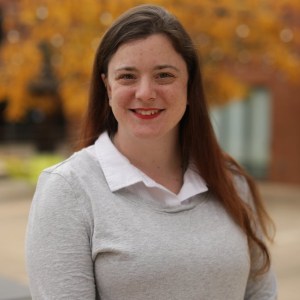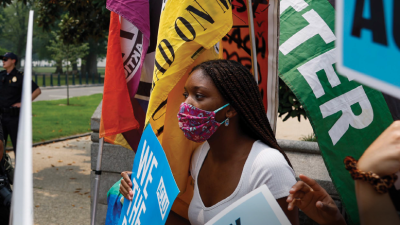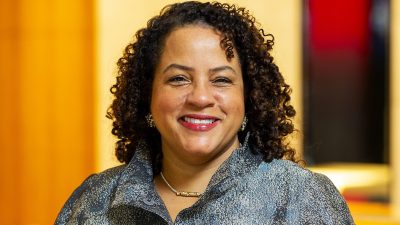
When we talk about equity, diversity, and inclusion in museums, we have a usual list of groups we mention: Black and Indigenous people, other people of color, LGBTQIA+ people, unhoused people, socioeconomically disadvantaged people, and formerly incarcerated people. To be sure, all of these groups deserve equity and inclusion in our field, but I have noticed that one group is frequently left off the list: disabled people. This is a problem, given how woven people with disabilities are into the fabric of our nation. According to the CDC, 26 percent of Americans have a disability, and many more of us will experience at least a temporary disabling event in our lifetime, especially as we age.
Sometimes organizations will add “accessibility” into their initiatives and use the acronym DEAI, as AAM does, but this does not always result in inclusion of disabled staff or visitors. Especially in times of rapid change, such as the coronavirus pandemic, even the minimum requirements of the Americans with Disabilities Act (ADA) can be overlooked, as organizations and institutions simply forget about the participation of disabled staff and visitors.
During the pandemic, our field has done a tremendous job pivoting to online communication, but it has not always centered accessibility. For museum workers, the vast majority of webinars and online happy hours do not offer captions, making them inaccessible to those who are Deaf or hard of hearing. For audiences, many of the tours and applications hosting virtual content are incompatible with screen reader software, making them inaccessible to people who are blind or have low vision. These are basic, well-known accommodations which should be provided at the outset, yet the burden is still on disabled people to request them, often with great effort.
On the other hand, the digital pivot has also improved museum accessibility for some disabled visitors—those who could not have come to our institutions due to mobility disabilities or other health reasons, but can participate in online offerings. After the pandemic is over, will our institutions remember to include these visitors in their outreach efforts?
Skip over related stories to continue reading articleThere is a good way to remember to center accessibility for disabled members of our community: hire more disabled people. But, unfortunately, the museum field has been as reluctant as the rest of American employers to do so—many disabled people struggle to find work in most sectors. While special appointing authorities for disabled workers exist for federal government positions, there is no such consideration at the vast majority of museums.
Even programs explicitly designed to increase diversity in museum hiring often leave out disabled people. One example came up at this year’s AAM Virtual Annual Meeting & MuseumExpo, on a panel about a museum’s diversity apprenticeship program. The museum did not include disability as one of the categories for applicants, and so received only one application from a self-identified disabled person—a hard-of-hearing applicant who was not selected for the program. In fact, the presenters stated that they had consulted with human resources to determine if disabled people could even do the work of a preparator—how could someone safely handle art if they were missing a hand, or receive instructions from behind if they were Deaf?
It is often able-bodied hiring teams’ lack of awareness or imagination that prevents disabled people from getting jobs in museums, not the disabilities themselves. Accommodations exist that make the work possible for a variety of disabilities—even if the employee has only one hand, or is Deaf—but if the people creating the program cannot imagine those accommodations, they will omit disabled candidates from consideration. For that reason, the disability community has used the phrase “Nothing About Us Without Us” since the 1990s to emphasize that empowering people with disabilities to make their own decisions (such as whether they are able to do a particular job or not) is an essential part of their full participation in their communities.
If we are to move into the future as a society, as DEAI efforts urge us to, museums must include disabled people in their hiring practices. If we do not achieve equity in our hiring practices, how can we achieve equity in our service to visitors? If we do not make accommodations for disabled employees in our workplaces and professional events, how can we make accommodations for our visitors?
Nicholas Thomas, Director of the Museum of Archaeology and Anthropology at the University of Cambridge, wrote in 2019 that museums have “enormously positive potential…to strengthen communities, make places better, and do things of many kinds for people.” If we are looking to the future—to new museum definitions, new roles in our communities, and new responsibilities to our visitors as a result of the pandemic—then “many kinds of people” must include everyone.
DEAI means everyone who is marginalized gets a seat at the table. If the table starts to feel overcrowded, we are responsible for adjusting the seats and making more space, until everyone who has been left out has the room they need—even if it’s for a mobility device, guide dog, interpreter, or any other accommodation.
About the author:
Meredith Peruzzi is the Director of the National Deaf Life Museum at Gallaudet University. As a public historian, her research interests lie in the area of nineteenth- and twentieth-century American Deaf history; as a museum professional, she has presented internationally on the subject of making museum exhibitions more engaging for Deaf visitors. She is a native of the Washington, DC, area, and is a PhD student in the Museum Studies department at the University of Leicester.









Comments